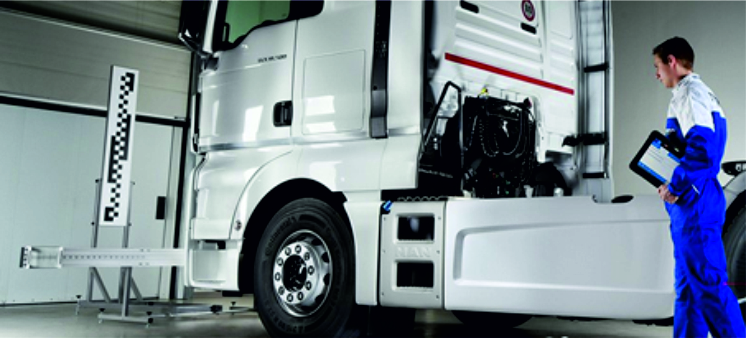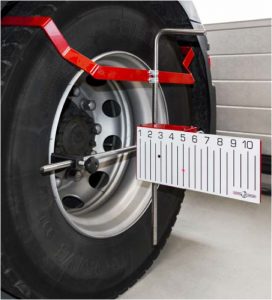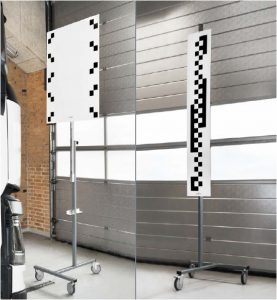
Hickleys explains how and why workshops need to invest in equipment in order to keep up with changes in technology.

Advanced Diver Assistance Systems (ADAS) are systems which have been developed to improve safety and better driving. Safety features are designed to avoid collisions and accidents by offering technologies that alert the driver to potential problems, or to avoid collisions by implementing safeguards and in some cases taking over control of the vehicle.
Within the commercial vehicle sector the use of ADAS systems has grown a great deal, particularly with the introduction of Lane Assist, which helps keep the vehicle within its correct lane and therefore prevents, or greatly reduces, the chance of side swipe accidents.
Highway Brake Control
With more and more HGVs on our motorways there is a greater need to control tailgating and reduce accidents. Highway Brake Control is a system which is in operation above 50kph and looks at distances between the front of the vehicle and the vehicle in front.
It works out when a plan of action is required and produces an acoustic signal to warn the driver of a potential hazard in its path, for example another vehicle, and applies brakes, slowing the vehicle down in a safe and controlled manner, should the driver not take the appropriate action.
City Brake Control
At slower speed a system called City Brake Control is used to warn the driver of dangers ahead, for example pedestrians or cyclists. These can be either moving away, towards or stationary to the vehicle. The system will warn the driver first and then carry out slow braking to avoid contact.
These are just a couple of the systems being used on commercial vehicles and they have to be checked for correct operation and calibration, if parts have been replaced. For instance, drivers will be asked to ensure that no warning lights are showing on the dashboard as they carry out their checks prior to them starting their journey.
Calibration rigs

In order to carry out these inspections, Hickleys says workshops will require calibration rigs to check the camera operation and to examine and adjust the radar calibration. Workshops which fit windscreens will now need a target rig and target boards with diagnostics to check the correct operation of the camera which is attached to or mounted behind the windscreen.
These will also be required when carrying out a repair after an accident or undertaking body modifications. On these occasions, a radar calibration rig will also be needed to check and adjust the radar at the front of the vehicle. Using diagnostics alongside the rigs, information will also be able to be gathered from the ECU to correctly check and re-set these items to manufacturer’s specifications.
At the end of the operation, a worksheet can be printed to show workings and prove the vehicle is safe to return to the road again, plus the transport manager can keep a record on file. Hickleys Ltd says it can supply the calibration rigs and diagnostic equipment to suit any workshop’s needs. The company can also provide mobile units, as well as customised bespoke packages. Once a product has been purchased,Hickleys will carry out on site training to staff members to enable them to fully understand what they are doing the checks and calibrations.








